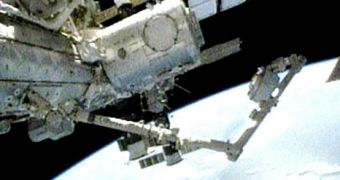As we were telling you yesterday, astronauts working on outfitting the newly installed Tranquility module with its observation deck met a number of problems in attempting to do so. First off, an insulation cover that was supposed to protect an empty docking berth could not be snapped into place, so officials at NASA had to establish whether they wanted to proceed without the cover, or wait for another shuttle mission to deliver the necessary components. Late on Sunday night, they decided to move with docking the Cupola to its correct location, in spite of all the glitches, Space reports.
Astronauts from the ISS and space shuttle Endeavor managed in the end to get past all the obstacles in their path, but jammed bolts and pieces that didn't fit neatly together posed a huge challenge. According to NASA, three different bolts became jammed at various times, and the mission specialists had to address each issue individually before proceeding with the planned installation. However, after resolving the issues with the bolts, the experts stumbled upon another problem. The petal-like capture mechanism that was used to attach the Cupola to its initial location on Tranquility was also stuck.
When transporting the new module and observation deck to the ISS, NASA engineers had no option but to affix the Cupola to one of the ends on Node 3. Once the new room was installed on the Earth-facing port of the Unity module, astronauts had to separate the seven-windowed observation dome, and then move it to another of Tranquility's docking berths, one that was facing our planet. This was done so that the crew working on the ISS could have the best possible view of our planet.
The Cupola weighs about 1.6 tons, and took $27.2 million to build. It features six windows, arranged in a flower-petal pattern around a large, central one, some 80 centimeters in diameter. This is the largest window ever flown to space, and its sole purpose is to allow astronauts a more intimate view of our planet. Using it should also facilitate working with the robotic arms that the station uses to move stuff around, or to capture incoming resupply ships that do not have auto-docking abilities. The Cupola is about ten foot wide at the base, and five feet in depth.

 14 DAY TRIAL //
14 DAY TRIAL //